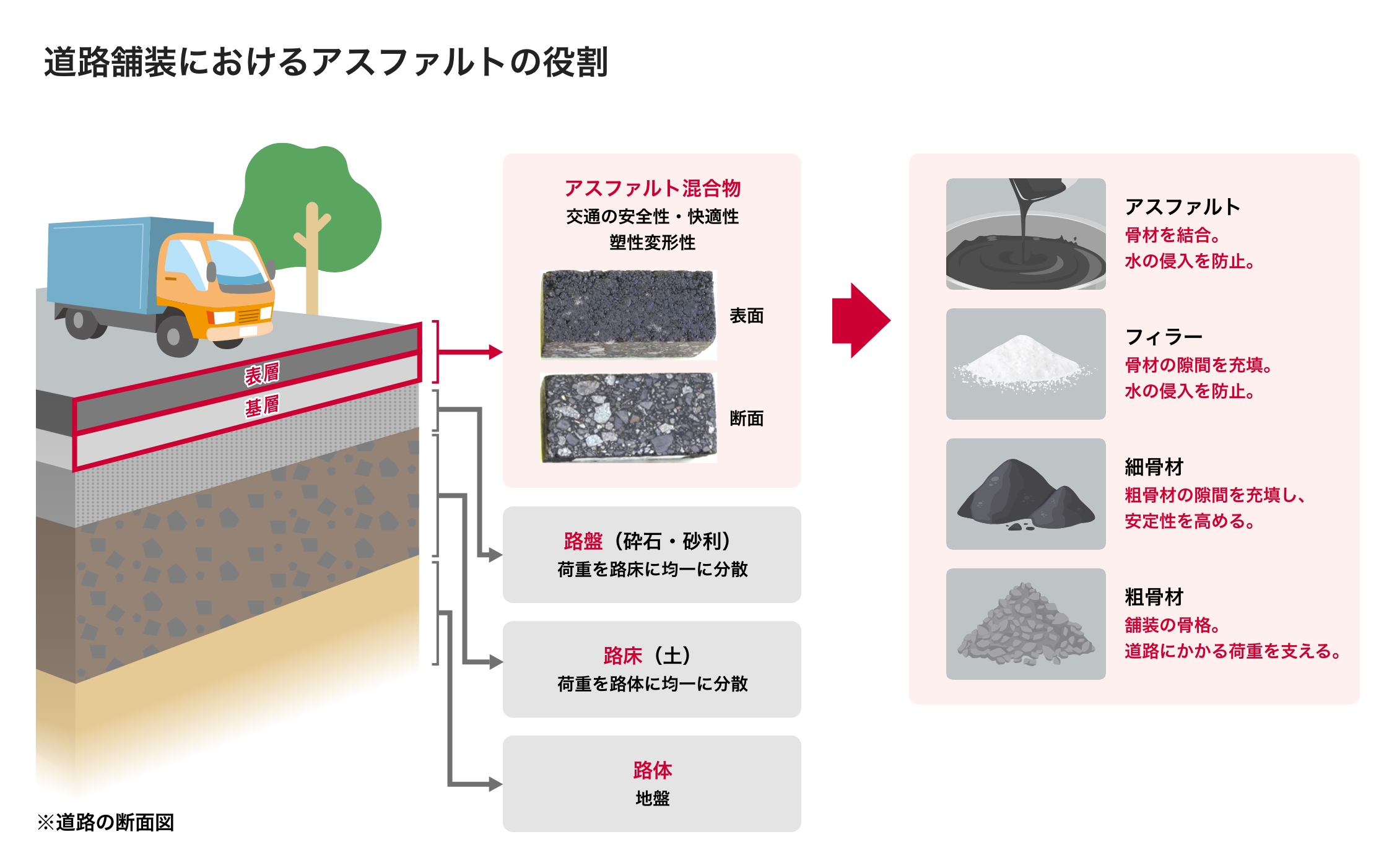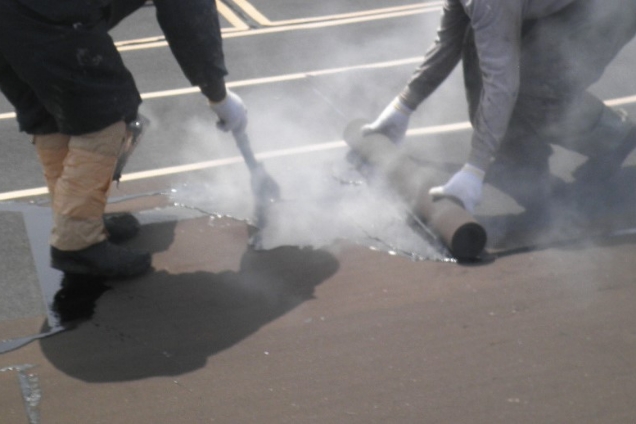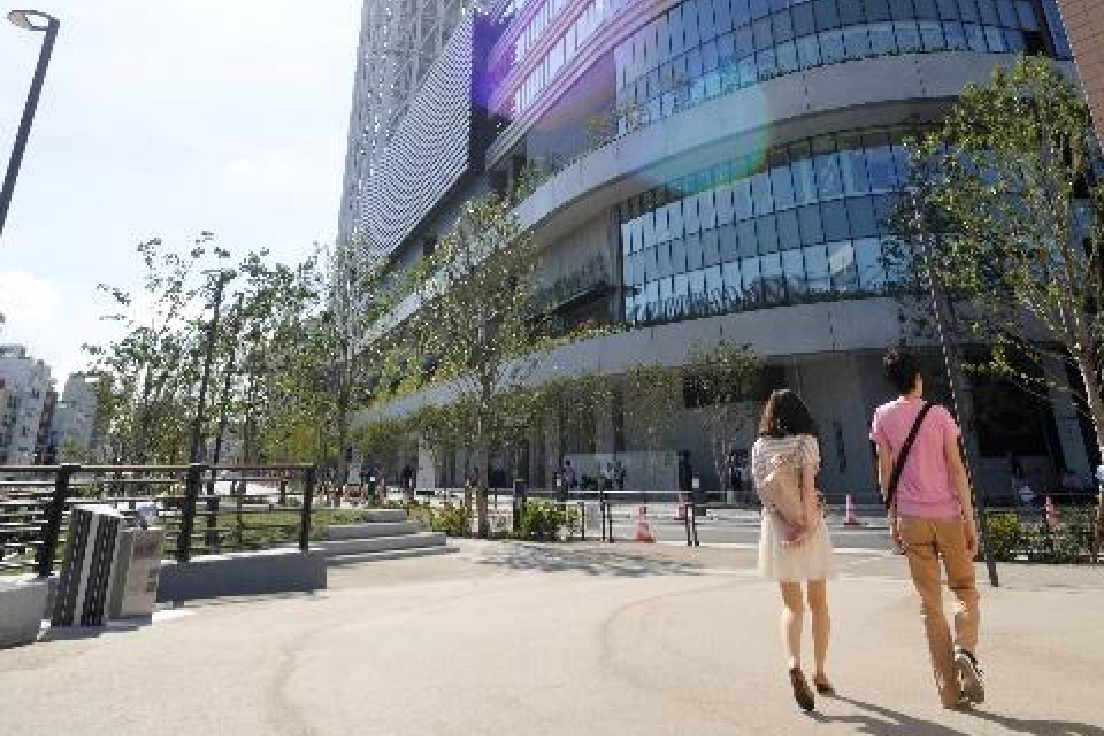What is asphalt?
What is asphalt?
There are two types of asphalt: "petroleum asphalt," which is produced by distilling crude oil, and "natural asphalt," which exists naturally.In Japan, petroleum asphalt is generally called "asphalt." At Idemitsu Kosan, our business takes advantage of the fact that asphalt is obtained through the distillation of crude oil, which is the process of manufacturing petroleum products.
Asphalt is dark brown or black in color, and is solid to semi-solid to highly viscous liquid at room temperature, but softens when heated. Asphalt, a petroleum product, is used as a binder, and asphalt mixture mixed with stone and sand is used for road paving.In Japan, asphalt mixture and asphalt pavement are also called asphalt.

History of asphalt use
Asphalt is now used in many places around us, such as road paving, but since ancient times in human history it has been used as an adhesive and waterproofing material. Natural asphalt is thought to be the residue left after the light components of naturally occurring crude oil evaporate. For example, it is known that natural asphalt was used as an adhesive in Japan during the Jomon period, and archeological sites in Aomori, Akita, and Niigata prefectures reveal arrowheads with natural asphalt attached and arrowheads repaired with asphalt. Many pottery and clay figurines have been unearthed.
Typical uses of asphalt
Approximately 80-90% of the asphalt used in Japan is used for road paving, and approximately 10% is used as waterproofing material. It is also used in a variety of other applications, including construction piles, automobile vibration damping materials, and submarine cable protection materials.
Types of asphalt
Petroleum asphalt obtained through the distillation process of crude oil includes "straight asphalt," which is mainly used for general roads, "blown asphalt," which is harder than straight asphalt and easier to use as a building material and industrial product, and hardened Blown Asphalt that is made at customer's request. There is a "high-performance asphalt" with adjusted thickness, etc. In particular, high-performance asphalt has a wide range of uses, including highways that require durability, long-life roof waterproofing materials, and recycled materials.
straight asphalt
It is mainly used for paving roads and parking lots. Road pavement is made of a mixture of stone, sand, stone powder, and straight asphalt (asphalt mixture). The word "asphalt" brings to mind roads and pavements, but in reality, most of it is stone and sand, and asphalt makes up only about 5 to 6%. This small amount of asphalt (asphalt binder) binds and fixes stones and sand, plays the role of distributing loads and blocking rainwater.

Blown Asphalt
This product is manufactured only by Idemitsu Kosan in Japan.
This asphalt is made harder than straight asphalt by blowing air into molten petroleum asphalt. By changing its properties, it is easier to handle as an industrial product. As a waterproof material, it is used as a raw material for roof waterproof sheets, vibration damping sheets for automobiles, and protective materials for submarine cables.

High performance asphalt
This asphalt has improved performance by adding rubber to straight asphalt. Used on heavy traffic roads such as national roads, expressways, and airports. The pavement lifespan is more than 1.8 times that of general straight asphalt pavement, contributing to the reduction of pavement life cycle costs and the frequency of pavement construction, thereby reducing greenhouse gas emissions.
In addition, there are recycled additives used in recyclable asphalt pavement and other materials.
Asphalt for better landscape /Light-colored paving
It's not just that "road = black". We provide pavements that harmonize with any landscape, from tourist spots and historic cityscapes to futuristic buildings. In addition to colored paving using pigments, locally produced natural stones and shells can also be used for paving. In addition, we have confirmed that the temperature of the pavement surface is 8 to 10 degrees lower than that of regular black pavement, making the pavement gentle for children near the road surface and babies in strollers.


pavement regeneration
Road pavement needs to be periodically renewed because cracks and ruts occur due to vehicle traffic, ultraviolet rays, rainfall, etc. Old pavement material removed during repair work is collected as a reusable Resources, crushed, and sorted by size, and can ultimately be reused as asphalt mixture or roadbed material. The recycling rate of asphalt waste material generated during road repair work (in Japan) has been about 99% since 2012.
Asphalt remains on the old pavement material removed during repair work, and this asphalt has oxidized and changed composition due to years of exposure to ultraviolet rays and rainwater, making it hard and brittle, so it needs to be adjusted back to its original hardness. Idemitsu Kosan's Asphalt with rejuvenator and Asphalt rejuvenator restore the properties of hard and brittle asphalt, restoring it to its original quality.